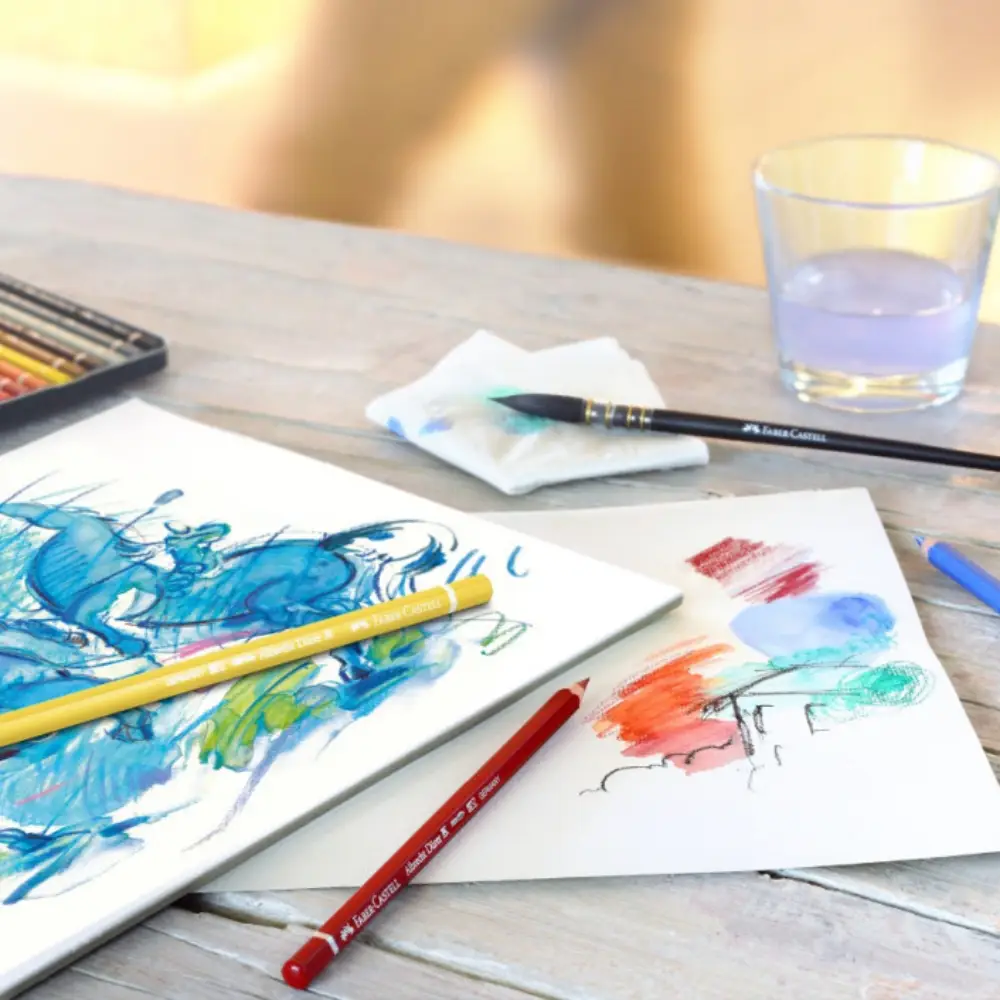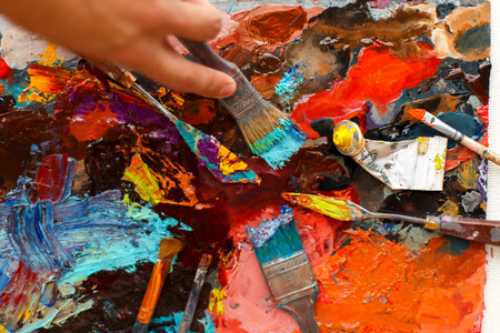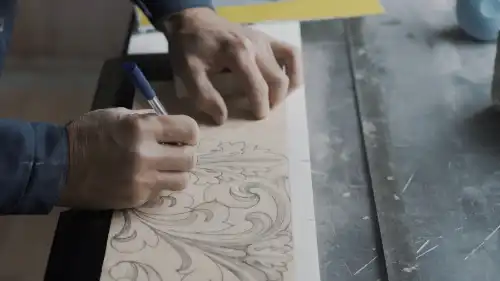Overview:
- What is a Brush?
- What are Synthetic Brushes?
- What are Natural Brushes?
- Which Brush should I be using?
- FAQ
-I’ve noticed I’ve become skilled enough at watercolour that my cheaper brushes are holding me back, what brush should I buy next?
- Do I have to clean my Natural Hair brush differently from my Synthetic Hair brush?
What is a Brush?
A brush is one of the oldest human tools. Since the neolithic era humans have been fashioning brushes out of animal hair or splitting reeds or other organic material to create brushes. Nowadays a brush is made of a wooden or plastic handle, a ferrule, that is made of an inexpensive metal that holds the hair to the handle, and lastly the hair. The tip of the hair is called the toe, the thicker middle part is referred to as its belly and the part that is glued down in the ferrule is called its heel. The most common natural hairs used in brushes are Squirrel, Goat, Ox, Badger, and Horse.
What are Synthetic Brushes?
It was in the 1950’s that synthetic brushes began to appear on the scene. Initially people were sceptical about these brushes because they were known to dissolve in solvents and warp. Many traditional artists still swear by natural haired brushes and completely disregard synthetic hair to this day. Originally synthetic brushes worked best with watercolours and acrylics. Acrylic paint still being quite new itself at the time, only becoming common among artists in the 60’s, many artists felt that acrylic paint could damage the finer and more delicate natural haired brushes.
Not working well for oil painters was a big reason why synthetic brushes didn’t hold much sway with artist. Yet they were also not favourable among watercolour artists as well.
When painting with watercolour, an absorbent brush is preferable, otherwise you’d run out of water quickly when applying paint, the stroke becomes dry, dull, and splotchy. This is why watercolourists need specific brushes where as Acrylic and Oil artists don’t need that degree of water retention in their brushes. The Natural hair brushes such as Kolinsky Sable have very fine grooves and cuticles along the hair follicle, which allows for more water to grip onto the hair follicle. This desire for the perfect brush has driven Kolinsky Sable hair to be worth three times the price of gold by weight. Most synthetic brushes are simply unable to recreate this affect, even though they do create these microscopic cuticles along higher end synthetic watercolour brushes, to mimic the effect of Kolinsky Sable, many artists feel it hasn’t beaten the natural product. Yet the development of new technologies in this space are frequent, and there may yet be a day soon where they can confidently say the natural hair watercolour brushes are obsolete.
What are Natural Brushes?
Natural hair brushes come from animal fur. The cost of the brush is reflected in the amount of care needed in the preparation of the brushes. All the fur in the brush making process needs to be washed, treated and without damage for the brush to be able to perform properly. Especially in the case of natural hair watercolour brushes where they are artisanal and require a craftsman to undertake many years long apprenticeship under a professional brush maker before they can create these brushes. People enjoy natural hair brushes for their ability to hold a lot of water and their ability to create a natural pronounced brush stroke in their work.
Watercolourists are fonder of natural hair brushes than acrylic or oil painting artists. A well-loved watercolour brush, with the proper care, can be a family heirloom, whereas oil and acrylic brushes begin to wear down quickly, and artists will find themselves needing to replace them often. So, the watercolourist is much more comfortable spending a lot more money on a natural hair brush.
Which one should I be using?
As the Artist, brush choice is subjective. Here at Art to Art, we predominantly stock extensive ranges of synthetic hair brushes in the Princeton and Neef ranges. Yet we still do stock an amount of natural hair brushes, such as the Princeton Refine, the Neef 1150’s and the Neef Sable brushes. The truth of it is that synthetic brushes are simply more economical, more accessible and are less harmful towards animals. A lot of artists still wish to use these brushes, which is entirely in their discretion, yet they are very unlikely to use one and abhor the other, most would carry both types of brushes and use them interchangeably.
FAQ
I’ve noticed I’ve become skilled enough at watercolour that my cheaper brushes are holding me back, what brush should I buy next?
If you have been using very cheap starter set brushes, the next step would be to move onto an intermediate range. My suggestion would be the Princeton Select range, as their price is very accessible, and their quality is fantastic. You’ll quickly discover Princeton Select’s reliably and longevity and consider them a real work horse brush. If you wanted to move into the higher end of brushes, into the realm of imitation natural hair synthetic brushes, the two best options would be the Princeton Aqua Elite and the Princeton Neptune brushes.
Do I have to clean my Natural Hair brush differently from my Synthetic Hair brush?
What is considered good practice when cleaning brushes is applicable to both sorts of brushes, both require care if you want them to last. Gently clean watercolour and acrylic brushes in an artist’s soap or brush cleaner and water, massaging the bristles with the soap to remove excess paint. When cleaning an oil painting brush there are a few more options, the standard clean for oil painting brushes is to rinse them in a jar of solvent, however artists soap do work with oil painting brushes as well and is very recommended for the health and longevity of your brushes. Just remember to also take care to be gentle when massaging their bristles with artist’s soap as well.





















































































